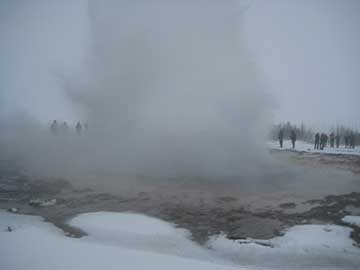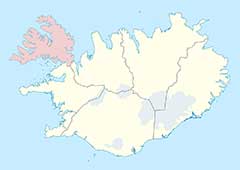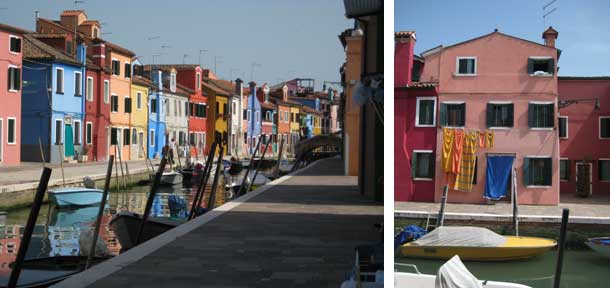Commuting days until retirement: 432

Wikimedia Commons / Patrick J. Lynch. Adapted
A break from philosophy, now, while we explore another discipline, one which I had not heard of before today – not under that name, anyway. I had the BBC’s Today programme on the car radio this morning, and there was an item about what it was like to live in an airport, with reference to the fugitive American whistleblower/spy, Edward Snowden. One of the participants in the piece was the writer Will Self, described as being a lecturer in psychogeography at Brunel University. This did get me listening more intently – I was intrigued as to what exactly he was teaching. It sounded like geography as taught by some of the teachers I remember from school. (To be fair, it was probably my lack of aptitude as a pupil that helped drive them to the brink of insanity.)
So the presenter started by asking, quite reasonably, “What is psychogeography?” Self’s reply was couched in such mind-numbing sociobabble that I was none the wiser. Instead I had to go to the BBC website later and find the recording, so that I could have another try. Here’s what he said:
Psychogeography is essentially the idea of purposeless transits across the urban context in order to deconstruct the commercial and political imperatives of contemporary space… [presenter: “Perfect”] …Well, yes, that’s it in a nutshell.
A rather hard nutshell to crack. Here’s my attempt at a translation: A psychogeographer wanders about towns and cities, ignoring all the upfront messages and propaganda that the establishment would have you accept, and looks instead at what is really happening, in human terms. Maybe it’s rather like psychoanalysis: instead of accepting what the city tells you at face value, you delve into its messy, scatalogical subconscious. The difference, perhaps, between visiting an expensive restaurant and rummaging through its dustbins – you’d certainly learn a lot more of interest from the latter.
Here’s an alternative (in both senses of the word) definition, from Time Out magazines’s Bluffer’s Guide to Psychogeography.
A mélange of history, geography, pretension and psychology invented by ’50s Gallic eggheads, who described it thus: ‘The study of specific effects of the geographical environment, consciously organised or not, on the emotions and behaviour of individuals.’ Basically, it means making stuff up about London.
I suppose you can forgive Time Out for being a bit London-centric, even if the subject was invented by Frenchmen. The ever-helpful, ever-earnest Wikipedia fills this in a bit, tracing its roots in Dadaism and surrealism, and identifying a central figure in its development in the fifties as one Guy Debord. The article allows itself to quote his biographer thus:
This apparently serious term ‘psychogeography’ comprises an art of conversation and drunkenness, and everything leads us to believe that Debord excelled at both.
I begin to warm to the subject. And it does indeed seem from the Wikipedia article that much of the present day psychogeographical activity is centred on London: there are all the writings of Peter Ackroyd, and also a mention of Iain Sinclair makes me realise I have read him. His book London Orbital derives from a walk around the route of the M25, London’s orbital motorway, in which he explores life close to the ground, as it were, beneath the headline developments.
There are so many books in our house, so badly organised, that some of them disappear into the mélee and aren’t easily found again, and unfortunately that has happened to Sinclair. The same goes for what I remember as a very charming book in a similar vein, Christopher Ross’s Tunnel Visions: Journeys of an Underground Philosopher. The “Underground” is literal here – he took a job for a year and a half as a station assistant on the London Underground, where he studied, and entertainingly reported on, the oddities of human life in that environment.
However I have managed to unearth Leadville by Edward Platt, which does what Sinclair did for the M25 on the main road which leads westward out of London. And on my to-be-read pile is Edgelands by Michael Symmons Roberts and Paul Farley: two poets explore (in prose) those areas, largely created by commercial activity which are not quite urban, and not quite rural. A selection of chapter headings gives you the idea: Paths, Containers, Landfill, Sewage, Canals, Ruins, Mines, Airports, Piers. It strikes me that I have even dabbled in the area a little in this blog: see Memento Mori.
And perhaps psychogeography’s credentials as an academic subject are underscored by the sniping between its practitioners. I dipped into the Amazon preview of Self’s book, derived from a newspaper columns and simply entitled Psychogeography, but much of the contents didn’t seem terribly urban. And sure enough, in a Guardian Interview, Sinclair says:
For me, it’s a way of psychoanalysing the psychosis of the place in which I happen to live. I’m just exploiting it because I think it’s a canny way to write about London. Now it’s become the name of a column by Will Self, in which he seems to walk the South Downs with a pipe, which has got absolutely nothing to do with psychogeography. There’s this awful sense that you’ve created a monster.
But you don’t have to be a writer to be a psychogeographer. It so happens that last night we watched a TV programme about the French/American photographer Vivian Maier. Again new to me – in fact she was obscure and unknown throughout her life, which ended a few years ago. Working as a children’s nanny in New York and Chicago, she spent all the time she could wandering the streets with a camera, and amassed countless thousands of marvellous photographs, many of which remained undeveloped at her death. She was secretive and solitary, and although something of a hoarder, she never owned her own place of dwelling, and had nowhere to keep her archive. Instead she paid to keep it in storage throughout her life, and soon before her death it was sold off when the fees got into arrears. This was when it was discovered, and has since been split between various owners and become immensely valuable.
There’s no question that her pictures got under the skin of the urban landscape: favourite subjects include down-and-outs, or any faces whose mood and character come right out of the picture, including many children. Although a recluse with little social contact, she seemed to have the knack of getting close to her subjects, both physically and psychologically, despite her cumbersome Rolleiflex camera. Other subjects include landscapes, found abstract patterns or any objects or scenes which appealed to her eye. There is a whole series of self-portraits, always with a portentous, even disturbing feel to them.
The website for her work is here: http://www.vivianmaier.com. And the TV programme is on BBC iPlayer until early August.
 And a few days after this rare rural idyll, we were in a city – Norwich, which I often visit for family reasons. Like all cities which have a long and rich history but are still thriving, there are piquant juxtapositions of old, young (and perhaps middle aged) wherever you look. Here’s one I happened to record:
And a few days after this rare rural idyll, we were in a city – Norwich, which I often visit for family reasons. Like all cities which have a long and rich history but are still thriving, there are piquant juxtapositions of old, young (and perhaps middle aged) wherever you look. Here’s one I happened to record: Or there is just the old – sun on the cloisters at Norwich Cathedral:
Or there is just the old – sun on the cloisters at Norwich Cathedral: And in the cathedral itself, there’s an evocative artwork by the Brazilian sculptor Ana Maria Pacheco:
And in the cathedral itself, there’s an evocative artwork by the Brazilian sculptor Ana Maria Pacheco: We are told it’s based on a scene from Virgil’s Aenead – Aeneas carrying his father from the ruins of Troy. I found it quite compelling – it’s the size of the faces, and the way their expressions are rendered, that commands your attention. The style seems like a blend of contemporary and medieval, giving a sense of the timelessness of the emotions depicted; and the cathedral setting adds to this. It put me in mind of some of the topics I’ve thought of writing about here: current attitudes to religion, and how humans and their ways of thinking can change (and also how they don’t change) across time.
We are told it’s based on a scene from Virgil’s Aenead – Aeneas carrying his father from the ruins of Troy. I found it quite compelling – it’s the size of the faces, and the way their expressions are rendered, that commands your attention. The style seems like a blend of contemporary and medieval, giving a sense of the timelessness of the emotions depicted; and the cathedral setting adds to this. It put me in mind of some of the topics I’ve thought of writing about here: current attitudes to religion, and how humans and their ways of thinking can change (and also how they don’t change) across time.



















